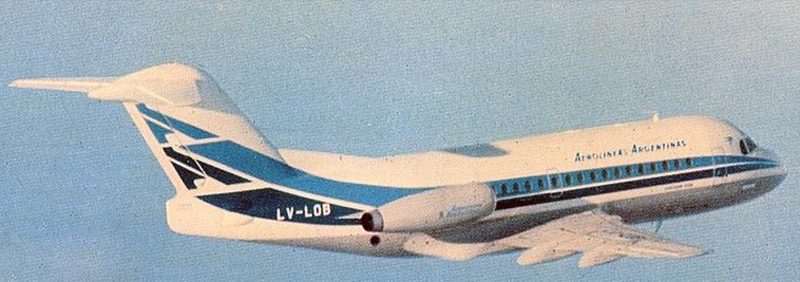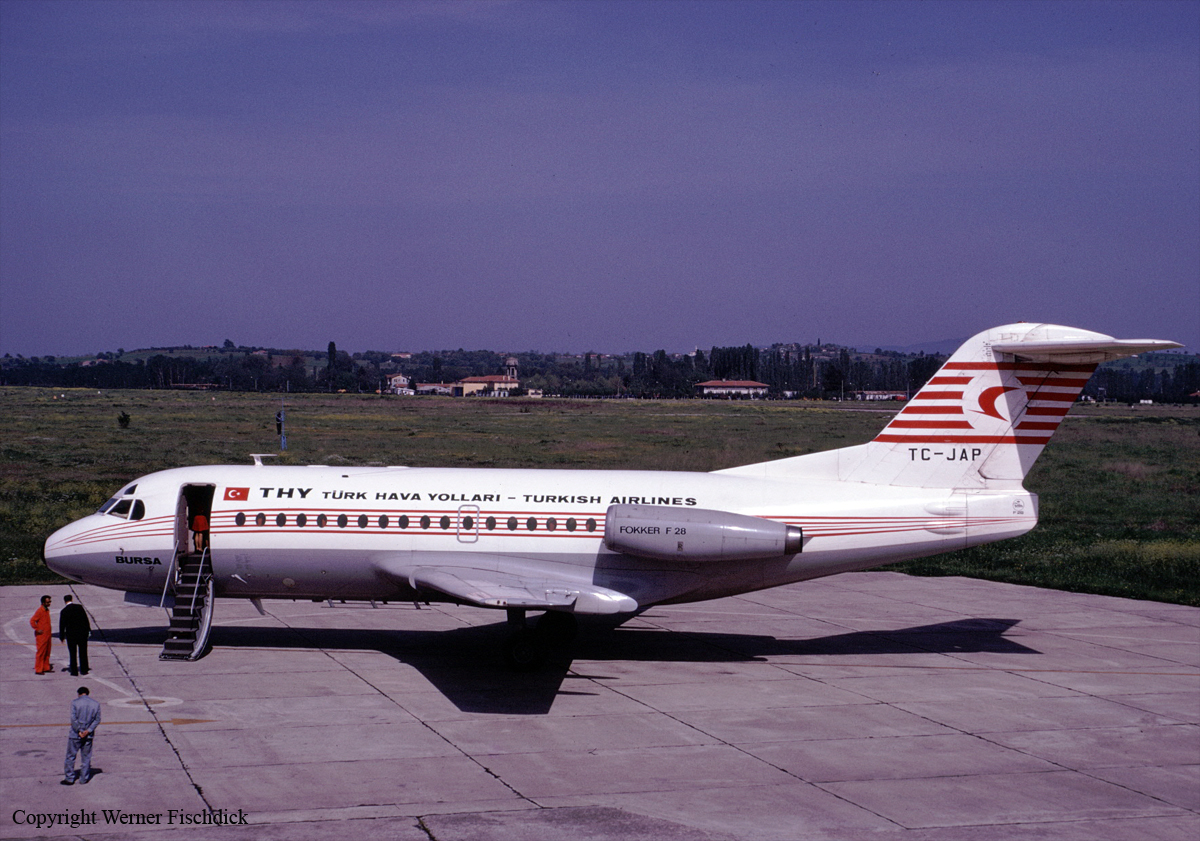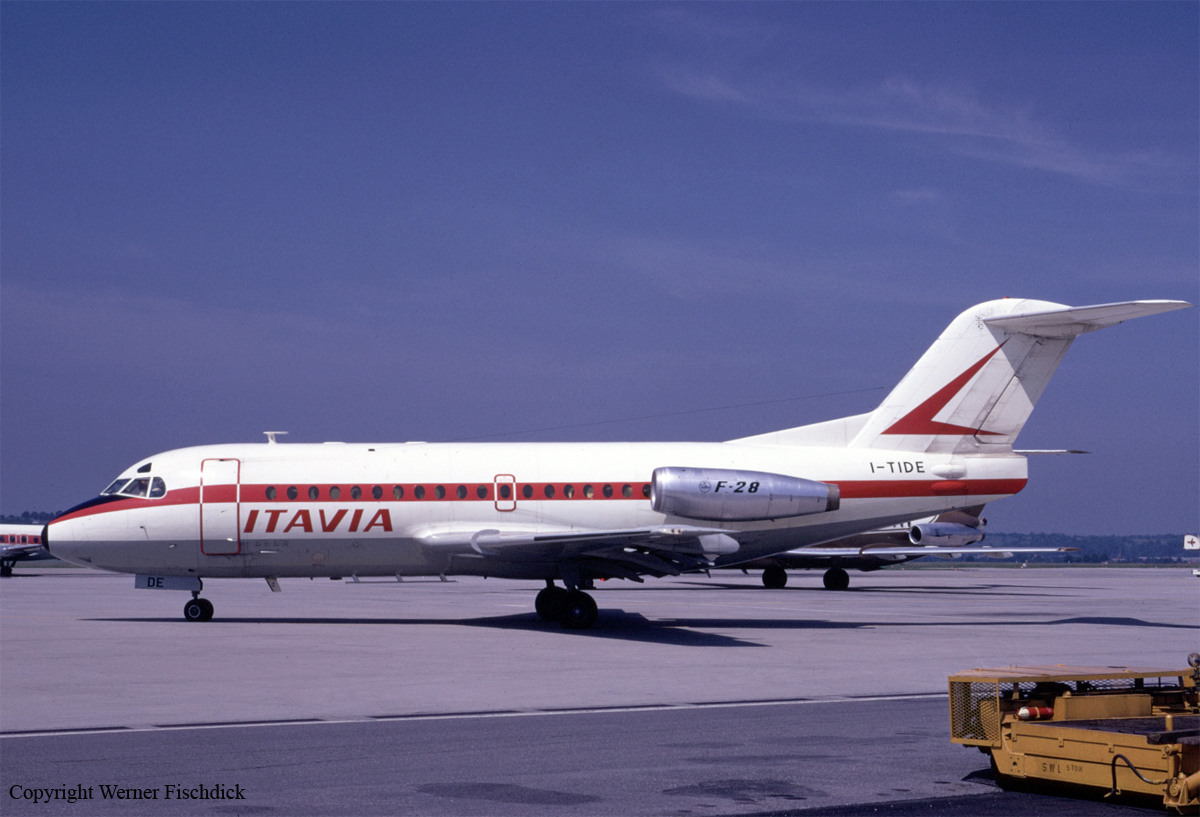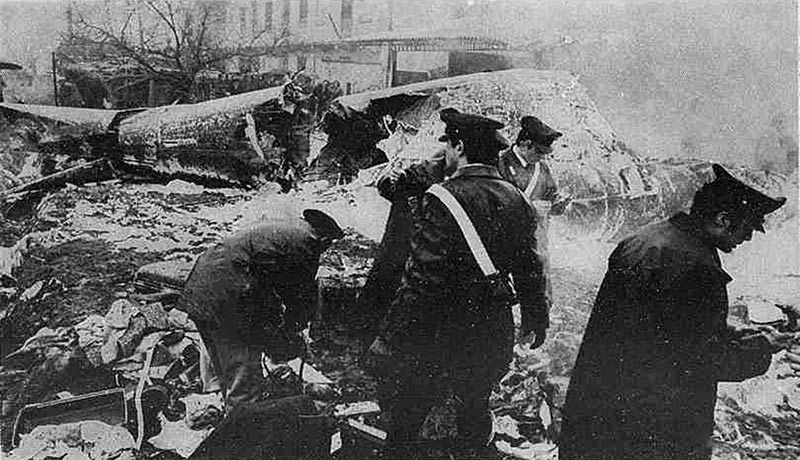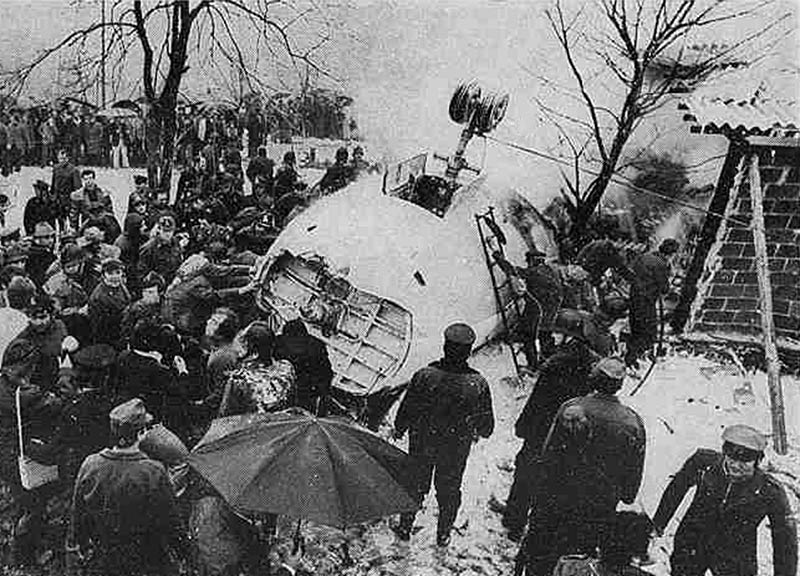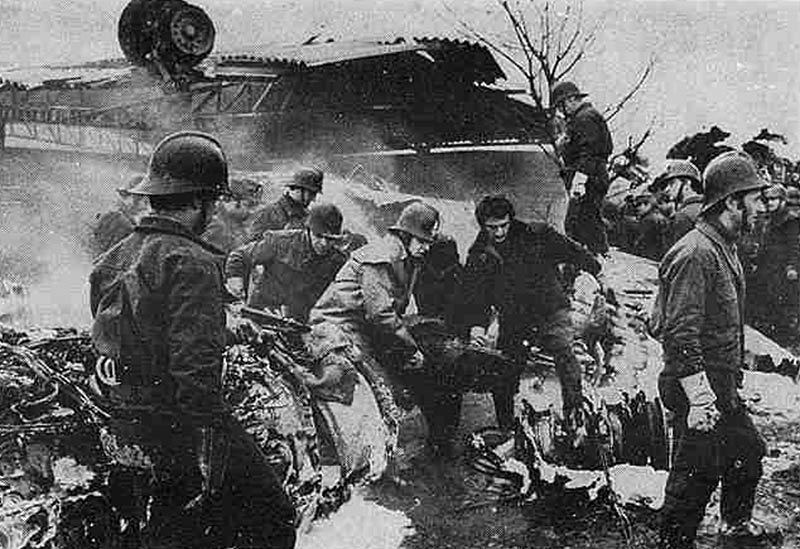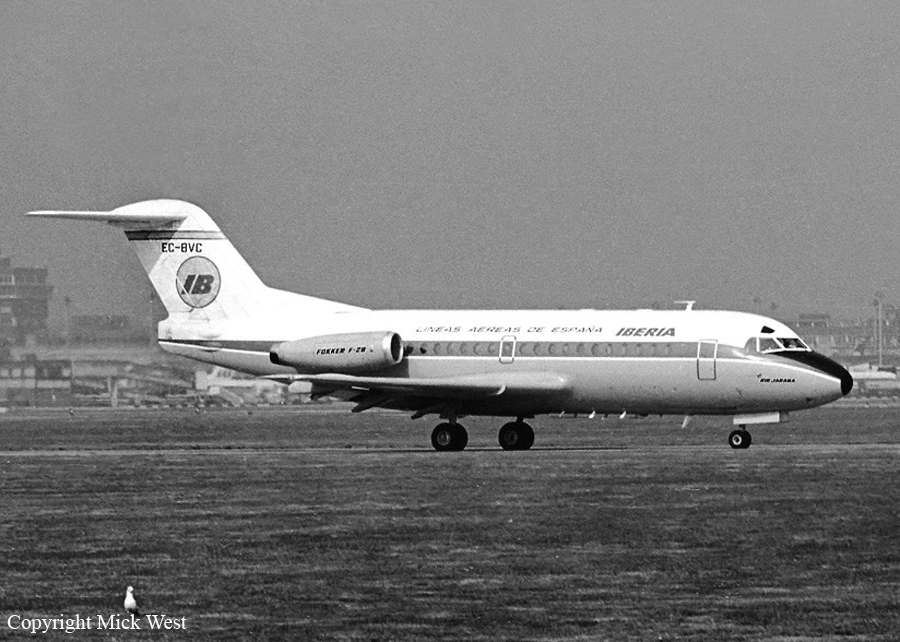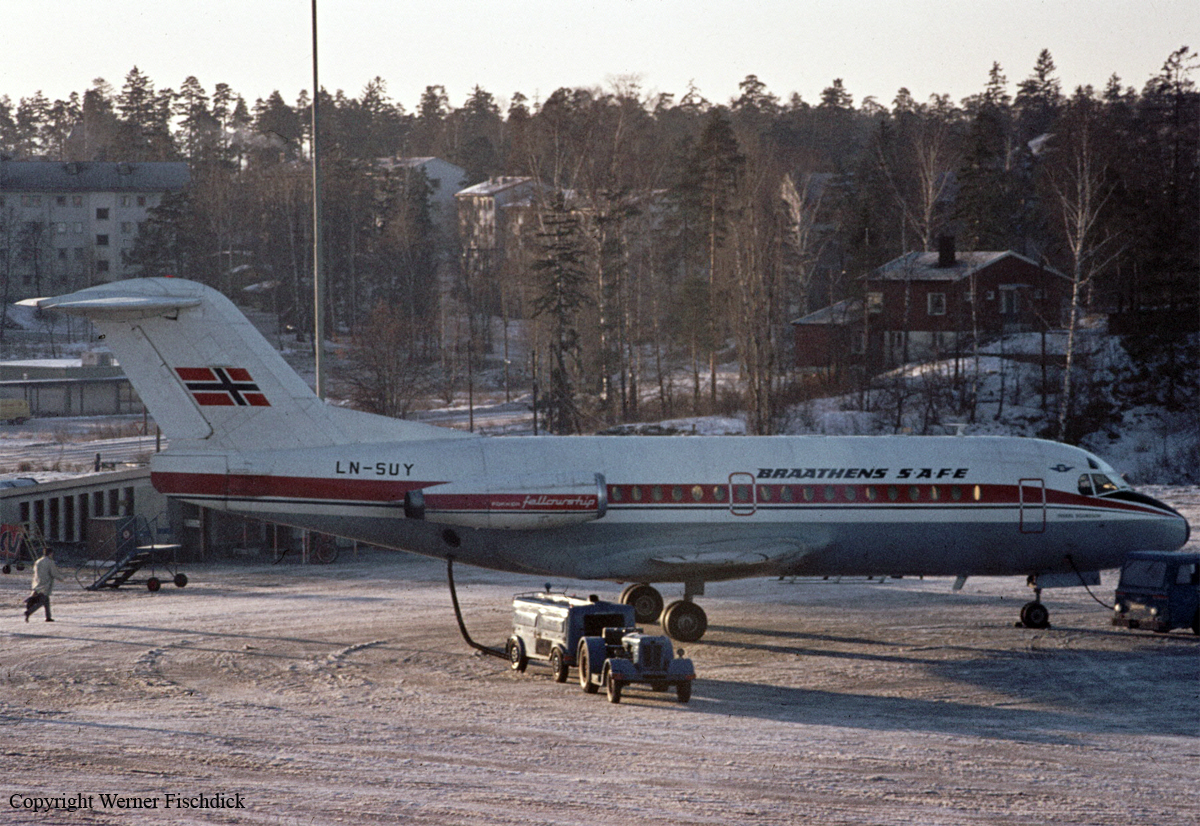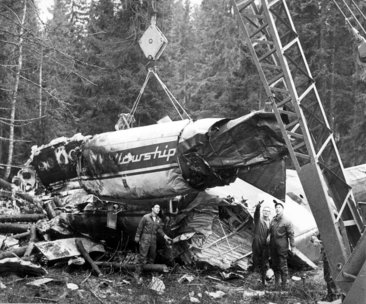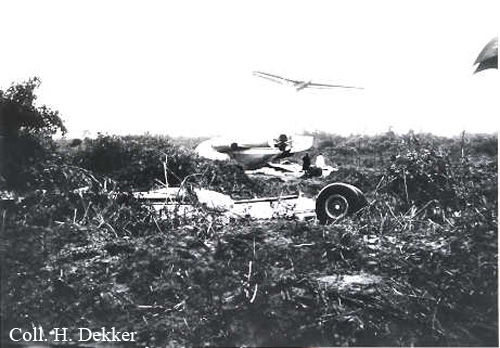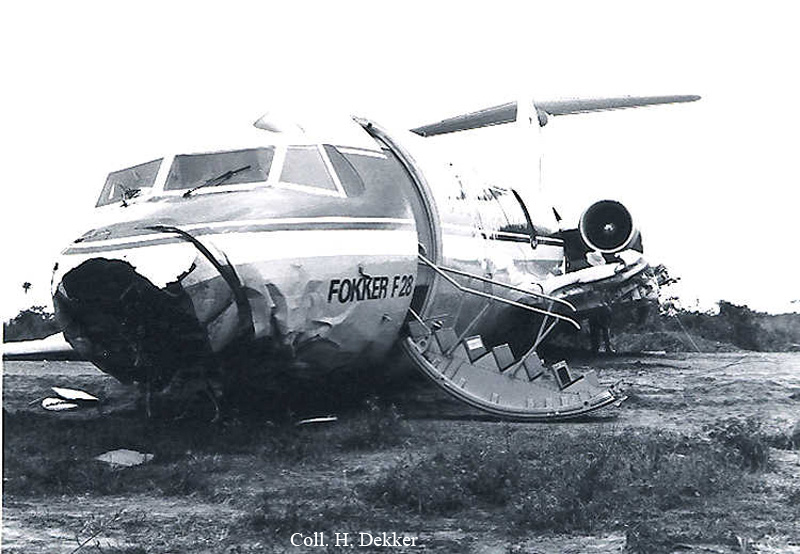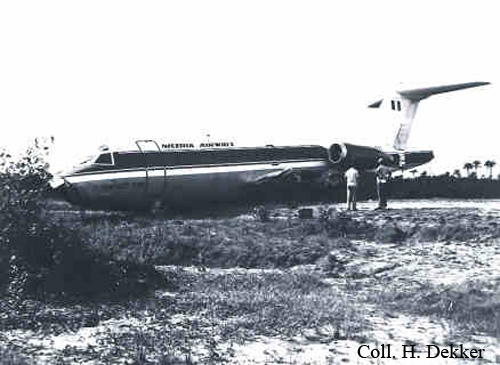Crash of a Fokker F28 Fellowship 1000 in Concordia
Date & Time:
Nov 15, 1975
Registration:
LV-LOB
Survivors:
Yes
Schedule:
Buenos Aires - Condordia
MSN:
11086
YOM:
1974
Crew on board:
4
Crew fatalities:
Pax on board:
56
Pax fatalities:
Other fatalities:
Total fatalities:
0
Aircraft flight hours:
1618
Aircraft flight cycles:
2816
Circumstances:
Following an uneventful flight from Buenos Aires, the crew initiated the descent to Concordia-Comodoro Pierrestegui Airport in good weather conditions and under VFR mode, the pilot-in-command failed to realize his altitude was too low when the left wing struck a tree located 4 km short of runway 21. The aircraft stalled, struck the ground, lost its undercarriage and slid for several dozen meters before coming to rest. All 60 occupants were evacuated, among them 10 were injured.
Probable cause:
Weather conditions were good and the approach was completed under VFR mode. Nevertheless, the crew descended below the MDA, causing the aircraft to struck obstacles.
